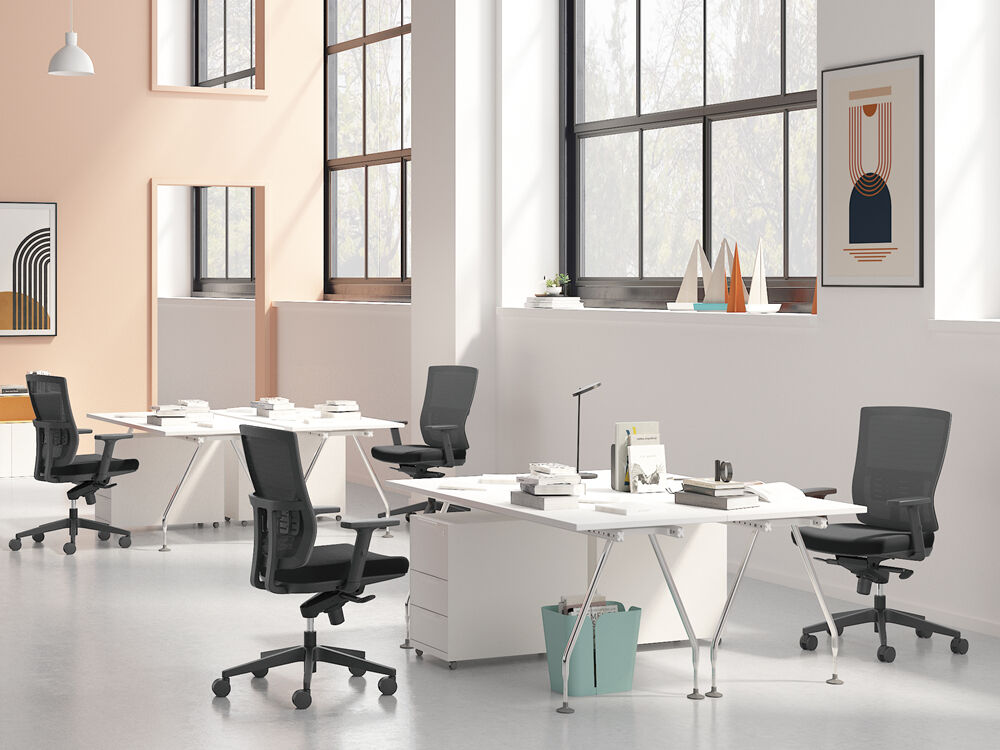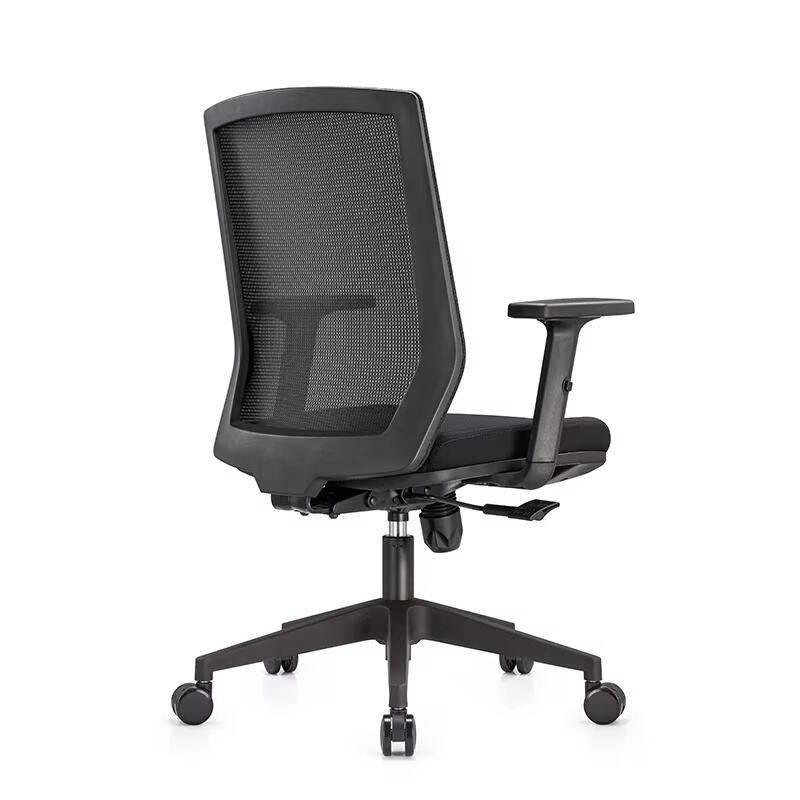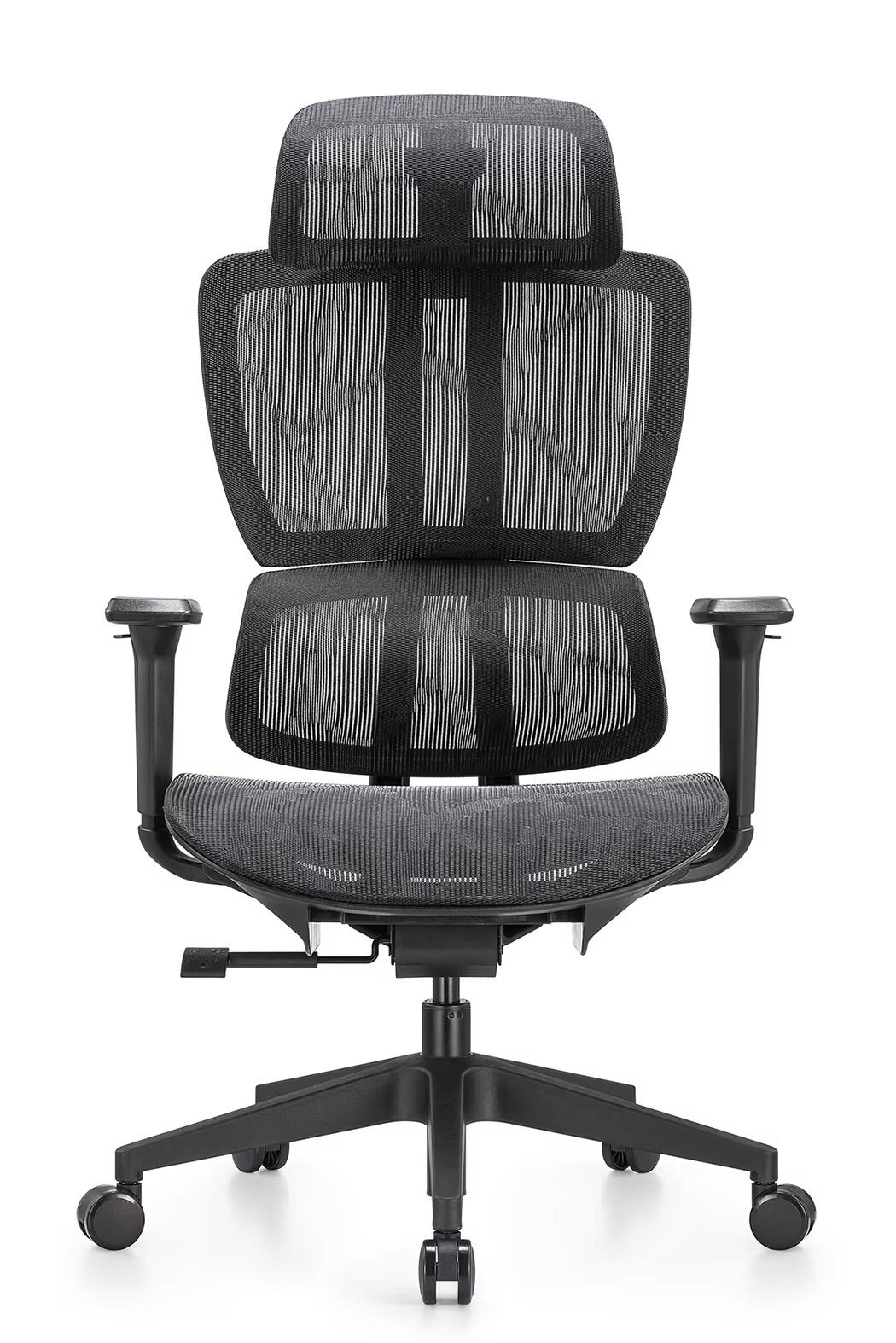
La science derrière le mobilier de bureau et la performance au travail
Dans le lieu de travail moderne actuel, où les professionnels passent d'innombrables heures à leur bureau, l'importance d'un siège approprié ne peut être surestimée. Chaises de bureau ergonomiques se sont imposées comme un élément crucial pour créer des environnements de travail productifs et sains. Ces chaises spécialisées allient des principes de conception sophistiqués à des caractéristiques ergonomiques avancées afin de soutenir la posture naturelle du corps humain et ses mouvements tout au long de la journée de travail.
Les recherches montrent systématiquement que les employés utilisant des chaises de bureau ergonomiques connaissent moins de troubles physiques, conservent une meilleure concentration et font preuve d'un niveau de productivité plus élevé. La relation entre un siège confortable et l'efficacité au travail est devenue si importante que de nombreuses organisations leaders considèrent désormais les chaises de bureau ergonomiques comme un investissement essentiel plutôt qu'une dépense de luxe.
Composants clés de l'excellence ergonomique
Mécanismes de réglage avancés
Les chaises de bureau ergonomiques modernes disposent de plusieurs points de réglage qui permettent aux utilisateurs d'adapter leur expérience d'assise. La possibilité de modifier la hauteur du siège, l'inclinaison du dossier, la position des accoudoirs et le soutien lombaire permet aux travailleurs de créer la position assise idéale en fonction de leur morphologie et de leur style de travail. Ces fonctions de réglage assurent un bon alignement de la colonne vertébrale, des hanches et des épaules, réduisant ainsi le risque de troubles musculosquelettiques.
Les chaises de bureau ergonomiques de qualité intègrent des commandes fluides et intuitives qui rendent les ajustements faciles et encouragent les utilisateurs à modifier leur position tout au long de la journée. Cette expérience d'assise dynamique aide à maintenir une bonne circulation sanguine et prévient les raideurs associées aux postures statiques prolongées.
Matériaux et Qualité de Construction
Les fauteuils de bureau ergonomiques supérieurs utilisent des matériaux de haute qualité qui offrent à la fois durabilité et confort. Le rembourrage comporte souvent un tissu maillé respirant ou un tissu premium qui régule la température et empêche l'accumulation d'humidité pendant de longues heures de travail. La construction de la base et du cadre utilise généralement de l'aluminium d'aéronef ou des polymères renforcés, assurant une stabilité tout en restant légers.
La technologie de rembourrage avancée des fauteuils de bureau ergonomiques offre un équilibre parfait entre soutien et confort. La mousse à mémoire de forme et les matériaux adaptatifs réagissent au poids corporel et à la température, créant une expérience d'assise personnalisée qui conserve son efficacité pendant des années d'utilisation.
Avantages pour la santé et bien-être au travail
Amélioration de la posture et prévention des douleurs
L'un des principaux avantages des chaises de bureau ergonomiques réside dans leur capacité à favoriser naturellement une posture correcte. Les courbes soigneusement étudiées et les systèmes de soutien aident l'utilisateur à maintenir un alignement optimal de la colonne vertébrale sans effort conscient. Ce positionnement naturel contribue à prévenir l'installation de mauvaises habitudes posturales pouvant entraîner des douleurs chroniques.
L'utilisation régulière de chaises de bureau ergonomiques est associée à une réduction significative des douleurs dorsales, des tensions au niveau du cou et des épaules chez les travailleurs de bureau. Les principes de conception de ces chaises permettent de répartir uniformément le poids du corps et de minimiser les points de pression pouvant provoquer de l'inconfort pendant de longues périodes assises.
Circulation et gestion de l'énergie
Les chaises de bureau ergonomiques de qualité favorisent une circulation sanguine saine grâce à leur conception et leurs matériaux. Le design de l'assise avec bord en cascade réduit la pression sur l'arrière des cuisses, empêchant ainsi la restriction du flux sanguin vers les jambes. Cette amélioration de la circulation aide à maintenir le niveau d'énergie et réduit la fatigue couramment ressentie lors de longues journées de travail.
Le soutien dynamique offert par les chaises de bureau ergonomiques encourage également de légers mouvements tout au long de la journée, ce qui permet de solliciter les muscles abdominaux et d'éviter la stagnation associée aux sièges de bureau traditionnels. Cette approche de la position assise active contribue à une meilleure gestion de l'énergie globale et à une productivité durable.

Facteurs d'amélioration de la productivité
Avantages pour la concentration et la focalisation
Lorsqu'elles sont assises sur des chaises de bureau ergonomiques, les travailleuses passent nettement moins de temps à ajuster leur position ou à gérer des inconforts. Cette réduction des distractions physiques permet une meilleure concentration sur les tâches professionnelles. Des études ont montré que les employés utilisant des chaises de bureau ergonomiques signalent des périodes plus longues de concentration soutenue et une meilleure clarté mentale tout au long de la journée de travail.
Le confort psychologique offert par un bon soutien ergonomique joue également un rôle dans le maintien de la productivité. Les travailleurs qui se sentent physiquement soutenus et à l'aise dans leur environnement font preuve d'un niveau accru de satisfaction professionnelle et d'engagement dans leurs tâches.
Optimisation du flux de travail
Les chaises de bureau ergonomiques facilitent les transitions fluides entre différentes activités de travail. Les fonctionnalités de mobilité des chaises, telles que les roulettes à roulement doux et la possibilité de pivoter, permettent aux travailleurs de se déplacer efficacement entre plusieurs surfaces de travail ou de collaborer avec leurs collègues sans subir les efforts liés à des mouvements maladroits.
L'adaptabilité des chaises de bureau ergonomiques soutient également divers styles de travail et tâches. Que ce soit en se penchant en avant pour examiner des documents, en s'inclinant légèrement pour travailler sur écran ou en maintenant une position droite pour taper au clavier, ces chaises offrent un soutien constant qui optimise l'efficacité du flux de travail.
Considérations pour un investissement à long terme
Analyse coûts-avantages
Bien que l'investissement initial dans des chaises de bureau ergonomiques puisse être plus élevé que celui lié aux meubles de bureau standards, les avantages à long terme surpassent largement les coûts. Les organisations qui mettent en œuvre des solutions de sièges ergonomiques de qualité constatent souvent une baisse de l'absentéisme due à une réduction des blessures liées au travail, ainsi qu'une amélioration des taux de rétention des employés.
La durabilité et la garantie des chaises de bureau ergonomiques haut de gamme assurent un coût total de possession plus faible au fil du temps. En tenant compte des gains de productivité et de la réduction des coûts de santé associés à un bon soutien ergonomique, le retour sur investissement devient de plus en plus évident.
Durabilité et longévité
Les chaises de bureau ergonomiques modernes sont conçues dans une optique de durabilité, en utilisant des matériaux recyclables et des procédés de fabrication qui minimisent l'impact environnemental. La durée de vie prolongée des chaises ergonomiques de qualité réduit les déchets et la fréquence de remplacement, contribuant ainsi à une durabilité à la fois environnementale et économique.
De nombreux fabricants de chaises de bureau ergonomiques proposent des conceptions modulaires permettant le remplacement de composants plutôt que le remplacement complet de la chaise. Cette approche prolonge non seulement le cycle de vie du produit, mais réduit également le coût à long terme du maintien d'une solution de sièges saine en milieu de travail.
Questions fréquemment posées
Combien de temps devrait durer une chaise ergonomique chaise de bureau ?
Une chaise de bureau ergonomique de haute qualité, correctement entretenue, devrait durer entre 7 et 10 ans d'utilisation régulière. Toutefois, cela peut varier selon les habitudes d'utilisation, l'entretien et la qualité de construction du modèle spécifique. Un nettoyage régulier et une utilisation adéquate des fonctions de réglage peuvent aider à prolonger la durée de vie de la chaise.
Quelles sont les caractéristiques les plus importantes à rechercher dans une chaise de bureau ergonomique ?
Les caractéristiques essentielles comprennent une hauteur d'assise réglable, un soutien lombaire, des accoudoirs ajustables et un mécanisme d'inclinaison synchronisée. Le fauteuil doit également posséder une base stable à cinq branches, des matériaux respirants et un rembourrage suffisant. La possibilité de régler l'angle du dossier et la profondeur de l'assise sont également des fonctionnalités précieuses pour un réglage optimal.
Les fauteuils de bureau ergonomiques peuvent-ils aider à soulager les douleurs dorsales existantes ?
Bien que les fauteuils de bureau ergonomiques puissent grandement aider à atténuer les douleurs dorsales existantes en offrant un bon soutien et en favorisant une posture correcte, ils sont plus efficaces dans le cadre d'une approche globale de la santé du dos. Celle-ci devrait inclure des mouvements réguliers, des étirements et une consultation avec des professionnels de santé en cas de troubles chroniques.











